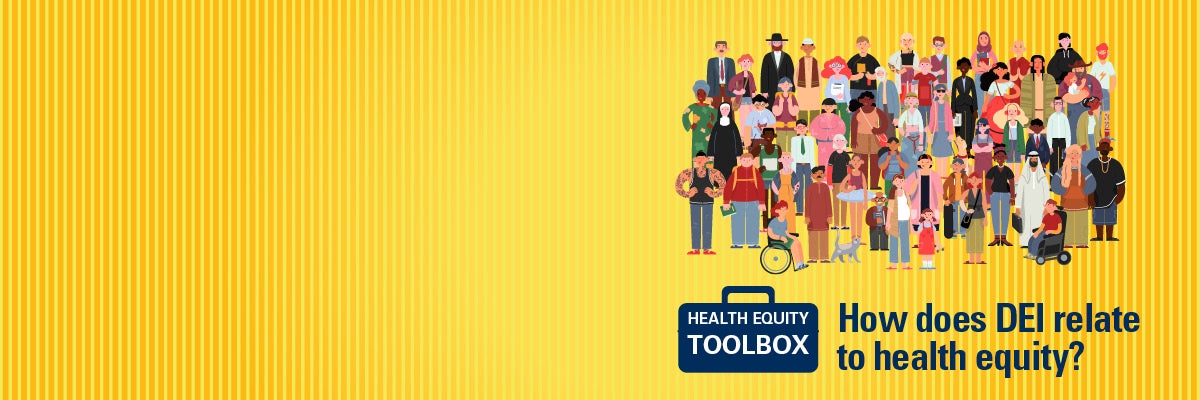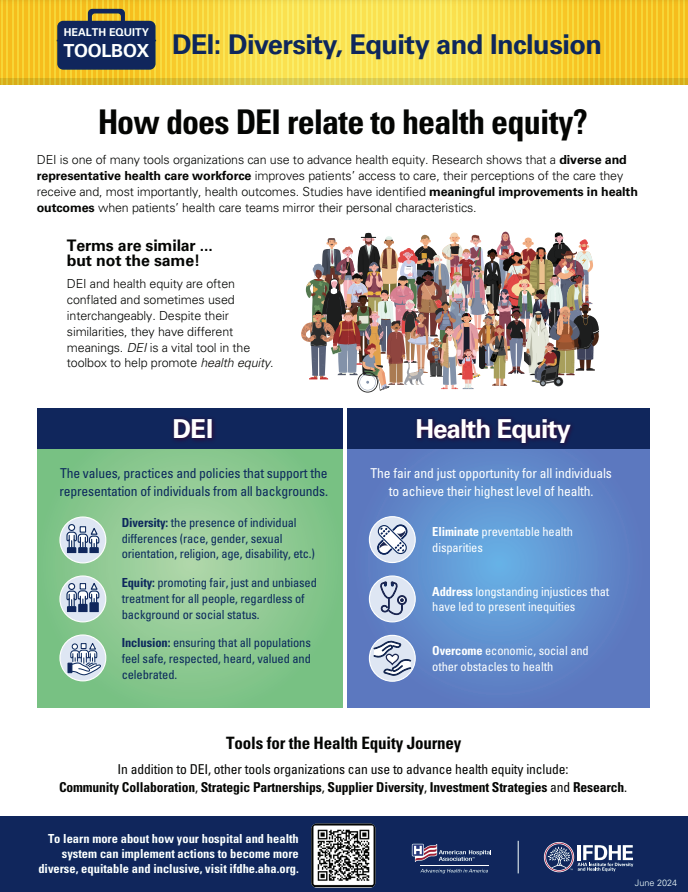
Health Equity Toolbox: Infographics
How can hospitals collaborate effectively with their communities?
Community collaboration is one of many tools hospitals and health systems can use to advance health equity. This second installment of IFDHE's series, The Health Equity Toolbox, delves into the importance of leveraging community collaborations to advance health equity.
How does DEI relate to health equity?
The terms DEI and health equity may be similar, but they are not interchangeable. Explore the first installment of IFDHE’s newest series: The Health Equity Toolbox, a set of resources designed to improve the field’s understanding of key health equity topics.


